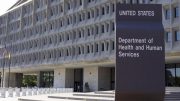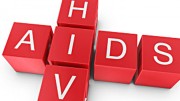By: Eric Brus*—
White House Launches Updated National HIV/AIDS Strategy
On July 30, the U.S. White House issued a new strategic document to guide the U.S. HIV/AIDS response for the next five years. The 74-page National HIV/AIDS Strategy: Updated to 2020 builds on the goals and accomplishments of the original National HIV/AIDS Strategy (NHAS), which was launched in 2010. According to the new NHAS’s Executive Summary, the updated strategy also responds to a number of key developments during the past 5 years. These include:
- Implementation of the Affordable Care Act;
- Important research indicating that beginning HIV treatment early―when a person’s CD4 T-cell counts are still high―both improves health outcomes for people living with HIV and dramatically reduces their risk of transmitting the virus to others;
- Introduction of PrEP (pre-exposure prophylaxis), which can help HIV-uninfected persons greatly reduce their risk of becoming infected;
- Adoption of new testing technologies that enhance the ability to diagnose HIV soon after infection;
- Funding increases for the AIDS Drug Assistance Program (ADAP), which helps ensure that people living with HIV have access to lifesaving antiretroviral treatment;
- Increased collaboration across Federal government agencies to coordinate HIV/AIDS-related programs and recommendations and to establish core indicators that support sharing data and evaluating progress toward NHAS goals.
The updated NHAS is built around four goals and a series of steps needed to meet them. These are outlined below:
Goal 1: Reducing New HIV Infections
- Step 1.A: Intensify HIV prevention efforts in the communities where HIV is most heavily concentrated.
- Step 1.B: Expand efforts to prevent HIV infection using a combination of effective evidence-based approaches.
- Step 1.C: Educate all Americans with easily accessible, scientifically accurate information about HIV risks, prevention, and transmission.
Goal 2: increasing Access to Care and Improving Health Outcomes for People Living with HIV
- Step 2.A: Establish seamless systems to link people to care immediately after diagnosis, and support retention in care to achieve viral suppression that can maximize the benefits of early treatment and reduce transmission risk.
- Step 2.B: Take deliberate steps to increase the capacity of systems as well as the number and diversity of available providers of clinical care and related services for people living with HIV.
- Step 2.C: Support comprehensive, coordinated, patient-centered care for people living with HIV, including addressing HIV-related co-occurring conditions and challenges meeting basic needs, such as housing.
Goal 3: Reducing HIV-Related Disparities and Health Inequities
- Step 3.A: Reduce HIV-related disparities in communities at high risk for HIV infection.
- Step 3.B: Adopt structural approaches to reduce HIV infections and improve health outcomes in high-risk communities.
- Step 3.C: Reduce stigma and eliminate discrimination associated with HIV status.
Goal 4: Achieving a More Coordinated National Response to the HIV Epidemic
- Step 4.A: Increase the coordination of HIV programs across the Federal government and between Federal agencies and state, territorial, tribal, and local governments.
- Step 4.B: Develop improved mechanisms to monitor and report on progress toward achieving national goals.
For a more detailed―but still relatively brief―summary of the updated NHAS goals and steps, please see the “Actions-at-a-Glance” sections on pages 8 through 11 of the updated strategy.
Ten Indicators to Track Progress
The updated NHAS also includes the following 10 indicators that can be used to monitor progress toward these goals:
- Increase the percentage of people living with HIV who know their serostatus to at least 90%.
- Reduce the number of new diagnoses by at least 25%.
- Reduce the percentage of young gay and bisexual men who have engaged in HIV-risk behaviors by at least 10%.
- Increase the percentage of newly diagnosed persons linked to HIV medical care within one month of their HIV diagnosis to at least 85%.
- Increase the percentage of persons with diagnosed HIV infection who are retained in HIV medical care to at least 90%.
- Increase the percentage of persons with diagnosed HIV infection who are virally suppressed to at least 80%.
- Reduce the percentage of persons in HIV medical care who are homeless to no more than 5%.
- Reduce the death rate among persons with diagnosed HIV infection by at least 33%.
- Reduce disparities in the rate of new diagnoses by at least 15% in the following groups: gay and bisexual men, young Black gay and bisexual men, Black females, and persons living in the Southern U.S.
- Increase the percentage of youth and persons who inject drugs with diagnosed HIV infection who are virally suppressed to at least 80%.
In late August, the White House issued a 24-page Indicator Supplement to the NHAS Update. The supplement provides detailed information on each of the 10 quantitative indicators described above, including annual targets leading up to 2020, as well as information about the rationale, data sources, and measures used for each.
Proposed HHS Rule Would Implement New Protections Against Discrimination in Health Care
On September 9, HHS issued a proposed rule designed to advance health equity and reduce disparities in health care. The proposed rule, Nondiscrimination in Health Programs and Activities, is designed to help some groups who have been most vulnerable to discrimination – including transgender persons – gain equal access to health care and health coverage. According to the HHS Office for Civil Rights (OCR), “The proposed rule makes clear HHS’s commitment, as a matter of policy, to preventing discrimination based on sexual orientation, and requests comment on how a final rule can incorporate the most robust set of protections against discrimination that are supported by the courts on an ongoing basis.”
The proposed rule contains a number of new protections, including provisions to ensure that women must be treated equally with men in the health care they receive, and provisions prohibiting discrimination based on gender identity. “For example, some insurance policies have historically contained categorical exclusions on coverage of all care related to gender transition,” according to OCR. “Those categorical exclusions are prohibited under the proposed rule. Individuals must also be treated consistent with their gender identity, including in access to facilities.”
“This proposed rule is an important step to strengthen protections for people who have often been subject to discrimination in our health care system,” HHS Secretary Sylvia Burwell noted. “This is another example of this Administration’s commitment to giving every American access to the health care they deserve.”
HHS is accepting written comments on the proposed rule through November 9. For instructions on how and where to submit comments, see the Addresses section of the proposed rule.
OTHER NEWS REPORTS AND MATERIALS
WHO Brief Calls for Improved Care for Transgender People
In its first-ever document addressing the specific health care needs of transgender persons, the World Health Organization (WHO) is calling for improved access to “comprehensive, integrated, quality health services, including HIV services, that respond to transgender needs . . . including integrated delivery of sound advice on safer gender-affirmation treatment and services, mental health, and substance use.” The 32-page WHO issue brief, Transgender People and HIV, notes that, although transgender women worldwide “bear an extraordinarily heavy burden of HIV . . . Transgender people have been neglected in the global HIV response.” Widespread stigma and discrimination in employment, education, housing, and health care are important contributors to HIV vulnerability among transgender persons. In addition, providers need to recognize that transgender people have multiple health needs beyond HIV and, as such, require holistic care in health care settings with staff who are knowledgeable about transgender health issues and capable of providing high-quality, respectful services to transgender people. The brief’s authors also recommend a research agenda to provide better epidemiologic data on transgender people while protecting their safety and confidentiality and to ensure that transgender people have access to a comprehensive package of evidence-based prevention interventions, including PrEP and early HIV treatment. National Public Radio spotlighted the WHO report and transgender health in a brief news feature available here.
PrEP Implementation Science Is Focus of Special JIAS Issue
The September 2015 supplement of the Journal of the International AIDS Society has the theme “PrEP Implementation Science: State-of-the-Art and Research Agenda.” According to the introductory editorial by Peruvian researcher Carlos Cáceres and his colleagues, the monograph’s 11 review articles, research papers, commentaries, and editorial take an in-depth look at “current conditions surrounding PrEP implementation, potential impact and efficiency, social science concerns and the study of PrEP implementation in specific country cases. The papers included in this monograph identify and cover many of the main aspects of the complex yet promising discussions around PrEP implementation today.” These include issues related to PrEP access in high-risk populations, including: gay, bisexual, and other men who have sex with men; serodiscordant heterosexual couples; transgender persons; persons who inject drugs, and sex workers. The full text of the 84-page September supplement is available for free in HTML and PDF formats.
PrEP Access Report from Project Inform: The 42-page report, Scaling Up Pre-Exposure Prophylaxis (PrEP) in California, presents recommendations for increasing access to and uptake of PrEP in the state of California. The report arose out of a think tank held in November 2014, attended by over 50 stakeholders from government, academia, public health departments, medical clinics, and community advocacy groups. It summarizes the think tank’s insights and recommendations concerning several important issues affecting the uptake of PrEP in California. These include: a lack of awareness and education about PrEP among some persons at risk for HIV and the providers who serve them; policy impediments to PrEP roll-out; and financial considerations that put PrEP beyond the reach of many persons who might benefit from it.
PrEP Infographic from AVAC: AVAC recently released an updated graphic summary of PrEP evaluation studies to reflect data through July 2015. The information is presented on a map of the world, highlighting the countries on six continents where PrEP research either has been or will be conducted. The number and status (completed, ongoing, or planned) of PrEP studies are provided for each of 22 nations. Links to detailed information about the specific PrEP studies is available on AVAC’s Track the Research page.
*Eric Brus is the Director of Health Information at AIDS Action Committee. This report is produced by the Health Library of the AIDS Action Committee in collaboration with the New England AIDS Education and Training Center Minority AIDS Initiative Project. The full version is available online.








